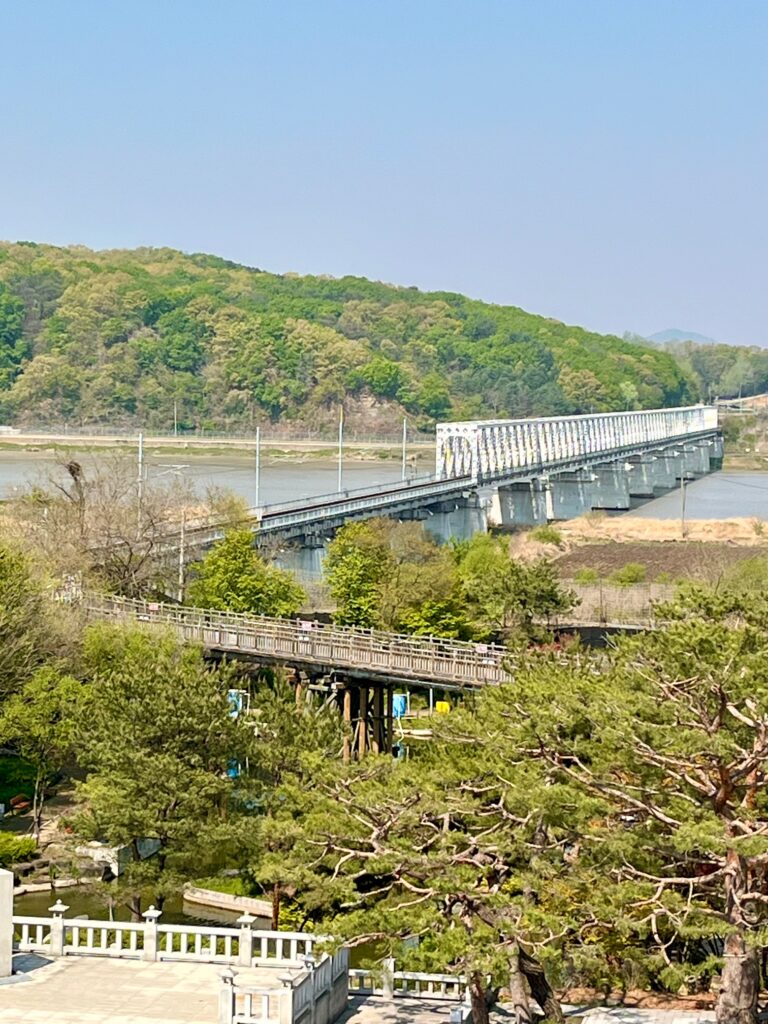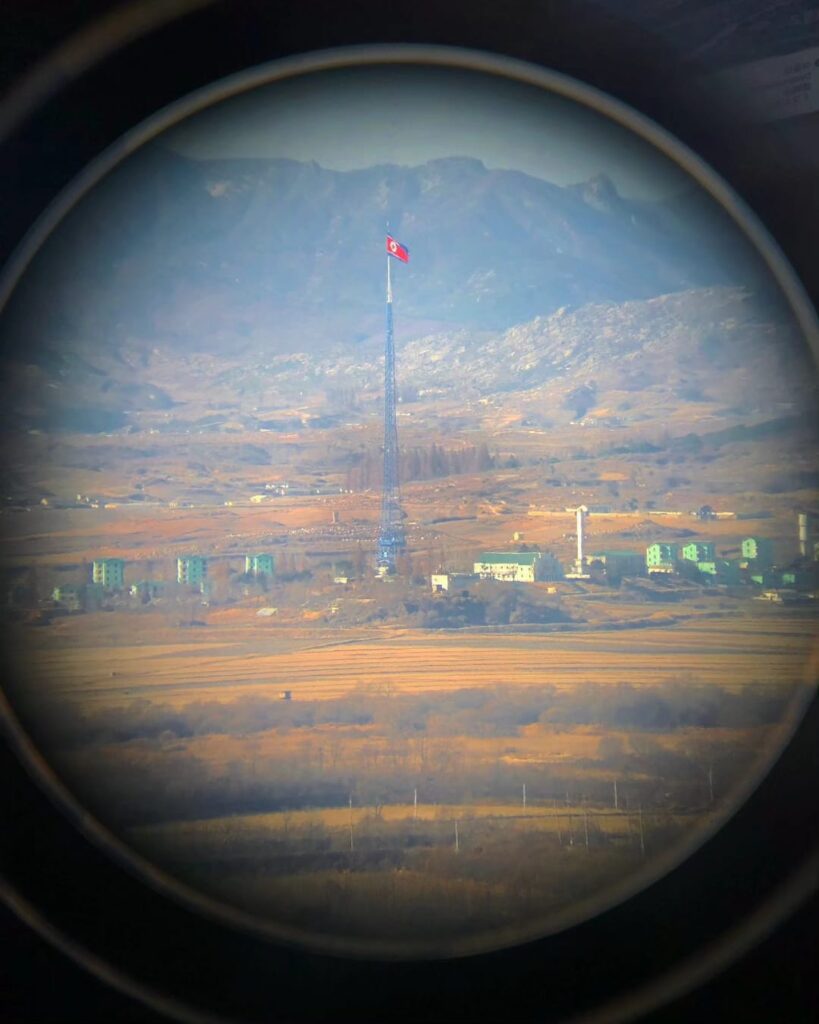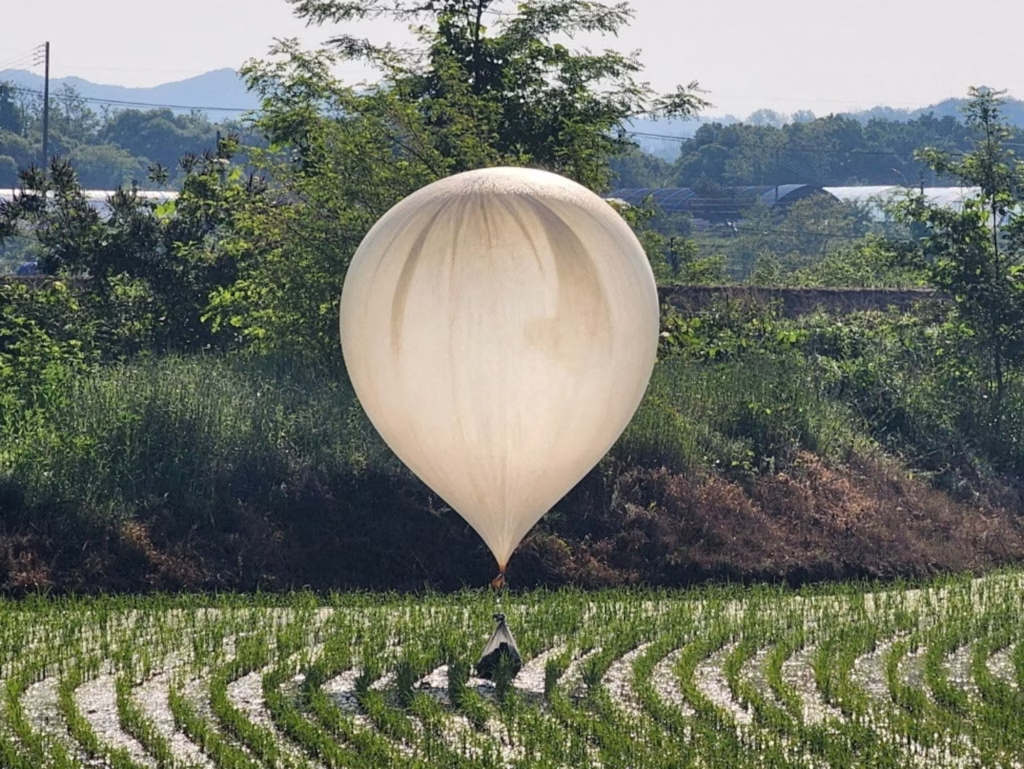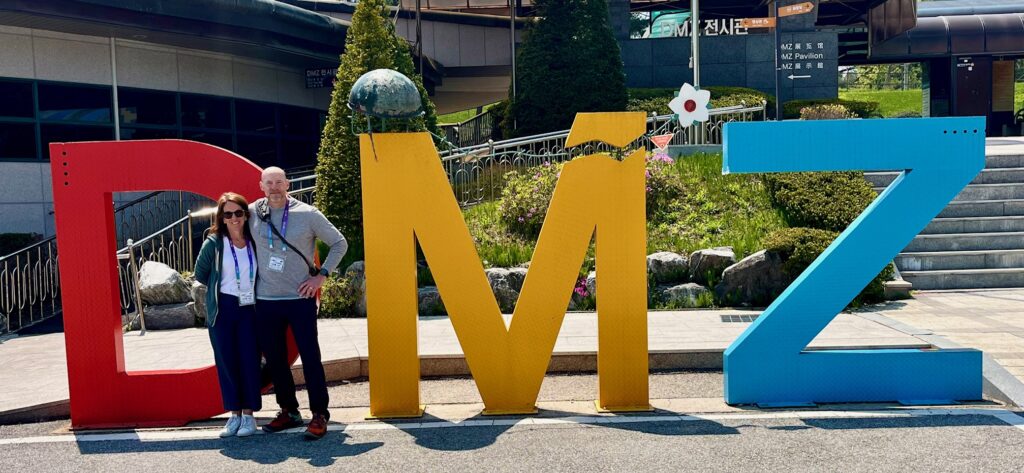Just an hour north of Seoul lies one of the most heavily fortified borders in the world — the Demilitarized Zone (DMZ) between South and North Korea. Despite its name, the DMZ is anything but demilitarized. It represents the ongoing tension from a war that never truly ended. Though we typically prefer exploring on our own, this morning we joined an organized tour (it’s the only way you can visit DMZ) — and were very glad to have Emily as our guide to provide history and personal Korean insights.
A Brief History of the Korean Divide
After World War II, Korea — once a single nation — was split along the 38th parallel into a Soviet-backed North and a U.S.-backed South. In 1950, North Korea invaded the South, sparking the Korean War. The brutal conflict ended in 1953 with an armistice, not a peace treaty, meaning the two Koreas are technically still at war. The DMZ, stretching 160 miles long and 2.5 miles wide, was established as a buffer zone. Over the decades, it’s become both a symbol of enduring conflict.
The U.S. Military at the DMZ: Guardians of the Armistice
The United States and the United Nations has maintained a continuous military presence in the DMZ since 1953. Today, approximately 28,000 U.S. troops are stationed across South Korea as part of a longstanding security alliance with a portion being stationed at the DMZ. U.S. soldiers here serve in a peacekeepers, monitoring armistice violations, and maintaining readiness in case tensions escalate.


Dora Observatory – A Glimpse into North Korea
From the Dora Observatory, visitors can peer across the border into North Korea using telescopes and binoculars. Thankfully we had a clear day so we could see Kijŏng-dong, a ghost town built by the North to project prosperity. You can also see the North Korean watch towers. It’s surreal to see the short physical distance into a completely different world. On the tour we were reminded that North Korea tightly controls nearly every aspect of daily life. Citizens have no access to the open internet or foreign media and cannot travel within or outside the country. Freedom of speech, religion, and political expression are virtually nonexistent.
South Korea’s Loudspeaker Campaign
When you get off the bus you immediately hear music. In mid-2024, South Korea reignited its psychological warfare tactics by resuming loudspeaker broadcasts along the DMZ, a move not seen in six years. This action was a direct response to North Korea’s deployment of over 1,000 balloons filled with trash and manure into South Korean territory. The broadcasts feature a mix of K-pop hits (absolutely not allowed in North Korea), and news critical of the North Korean regime. These powerful loudspeakers are designed to project sound up to 3-4 miles and broadcasts reach about 200,000 residents in city of Kaesong. The content of these broadcasts is carefully curated to challenge the North Korean government’s narrative. By exposing listeners to South Korean culture and uncensored news, the broadcasts aim to sow seeds of doubt and curiosity among North Korean people.
The 3rd Infiltration Tunnel – Into the Depths of History
Discovered in 1978, the Third Tunnel of Aggression is one of four tunnels South Korea has uncovered (and many believe there are more yet to be found). These tunnels were dug by North Korea as part of covert invasion plans, allowing troops to enter the South undetected.
We descended into the tunnel — about 1/4 mile — through a steep passageway, where the air grows colder and the rock walls feel oppressively close (people that are clausteropic should pass). It’s a steep walk but incredibly impactful. At the end of it you are extremely close to the North Korean border. The four discovered tunnels could have allowed 30,000 soldiers per hour to pass through, and seeing it firsthand gives you a true sense of the risks South Korea has faced.
What Surprised Me Most at the DMZ? That the Standoff Never Ended
The DMZ isn’t a relic of the past; it’s a living, breathing frontline where rules shift, threats resurface, and psychological tactics play out in real time. I asked our Korean tour guide whether reunification is something South Koreans still hope for. Her answer surprised me. While some older generations may still dream of a united Korea, many younger South Koreans — who didn’t live through the Korean War — are hesitant. The prospect of reunification feels abstract, uncertain, and risky. The biggest fear? That war might be the only path to unity. And after decades of peace and prosperity, most don’t want to jeopardize that stability. It’s a complex question with no simple answer — just like the DMZ itself.


